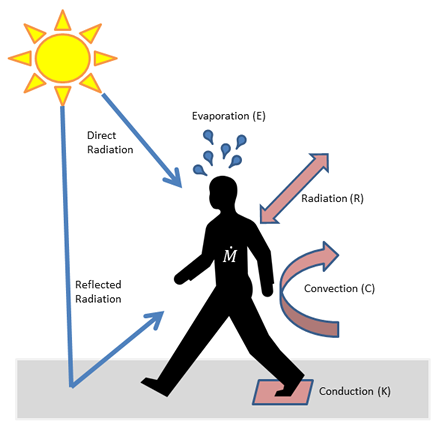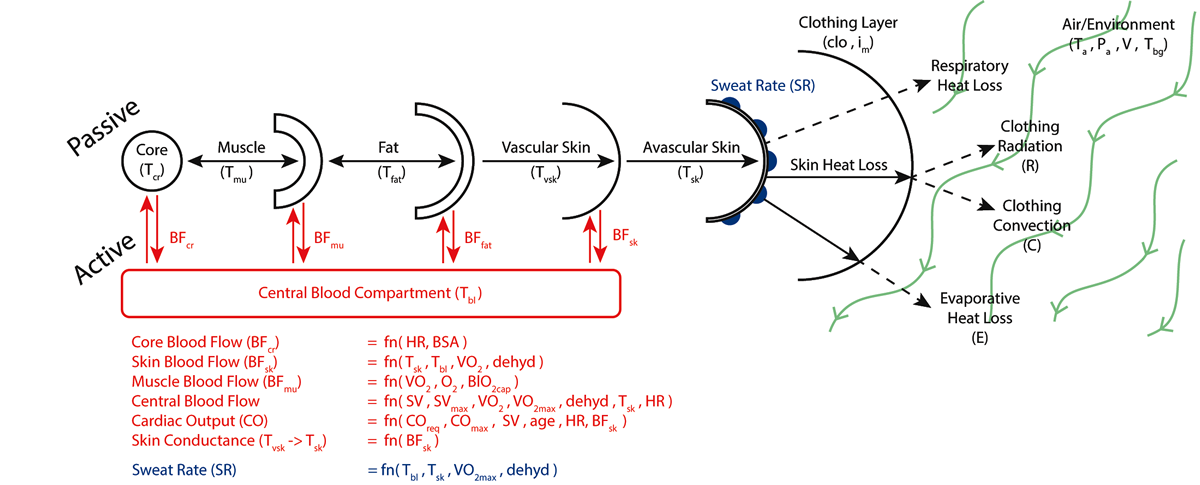SCENARIO - Human Thermoregulatory Response Model

The SCENARIO model is a physics-and physiology-based thermoregulatory model designed to predict heat strain experienced by humans in athletic, industrial, and military settings. This program models physiological body temperature shifts, thermoeffector responses, and circulatory changes for subjects wearing various types of clothing and exercising in warm or hot environments where metabolic heat dissipation can be challenging.
SCENARIO predicts core temperature given a number of inputs including metabolic rate (M); environmental parameters (air temperature (TA), black globe temperature/mean radiant temperature (TBG/MRT), wind speed (WS), and relative humidity (RH)); clothing biophysical characteristics (insulation (clo), vapor permeability (im)); and individual anthropometrics (height, weight, and % body fat).
The model is divided into passive and active components. The passive components consist of six concentric cylinders, each modeling a different macro-component of the human body:
- central core representing the heart, lungs, and splanchnic regions;
- muscle layer;
- subcutaneous fat layer;
- vascular skin layer;
- superficial avascular skin layer; and
- central blood compartment.
The active components consist of algorithms designed to control rate of blood flow through each of the passive system components, thereby modulating rate of heat exchange, sweat secretion, and the level of heat conductance between the vascular and avascular skin layers. More specifically, the active components include:
- central core blood flow;
- vascular skin blood flow;
- muscle blood flow; and
- vascular to avascular skin conductance.

The SCENARIO model, originally developed over 15 years ago2,3, has been updated with new algorithms in order to improve model accuracy and expand functionality across environment, work intensity and type, and anthropometric characteristics. SCENARIO has been used to model core temperature and thermal-work strain4,5, as well as to estimate metabolic rates5 and provide real time pacing feedback during exercise1.













